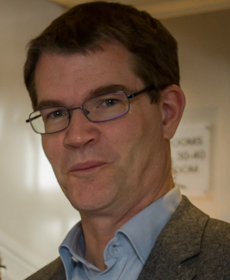A word from the EP Deputy Department Head - December 2022
 Dear colleagues,
Dear colleagues,
As 2022 draws to a close, we can look back and reflect on a year with many surprises and challenges, first and foremost the ongoing Russian invasion of Ukraine, and the consequent energy and inflation crises. These are challenges for society as a whole, but affect us particularly at CERN, a laboratory built on open and world-wide scientific collaboration. CERN has already taken several measures to adapt to this new landscape – e.g. the shorter accelerator runs in 2022 and 2023, and the crisis levy on staff salaries for 2023. Further measures are being explored for possible implementation in the coming years, to adapt as necessary to the evolving financial situation.
But 2022 was also a year with many inspiring achievements, which you can read about in the articles of this edition of the EP newsletter. After several years of shutdown, preparation and commissioning, the LHC restarted with stable beam collisions at the record collision energy of 13.6 TeV on 5th July, and articles from the control rooms of the large LHC experiments give insights into the excitement of that day, as well as the work to fully commission the upgraded detectors as the LHC luminosity ramped up throughout the year. A particularly delicate operation was the ‘closing’ of the LHCb VELO vertex detector, first achieved on 21st October. Before this, a record-breaking 57 hour special run of the LHC in September allowed the LHCf collaboration to record data which should give new insights into the physics of cosmic rays.
Away from the LHC, the other physics programmes of the laboratory have also made great strides in 2022, and in this edition you can read about the latest results from the nTOF and NA61/SHINE experiments, as well as progress in the LISA project at ISOLDE. The NA62 experiment successfully tested an upgraded Cherenkov detector in an SPS testbeam. A workshop on Feebly Interacting Particles (FIPs) in October provided an opportunity to review the current state of searches for FIPs worldwide, and plan the next steps. One intriguing FIP candidate is the axion, and a historical review of the activities of the CAST experiment, which combined a spare LHC dipole magnet with exquisitely sensitive detectors, provides an overview of its contribution to the field over the last 25 years.
Much of the EP department’s activity is focused on preparing for the future, and articles on the ATLAS central trigger and CMS data acquisition upgrades showcase how two of the LHC experiments are getting ready for the increases in LHC performance expected in the coming years. You can also read about how the EP-DT group and experiments are exploring how to make gas-based detectors more environmentally-friendly, by reducing the losses of harmful greenhouse gases during operation and eventually replacing them with more sustainable alternatives. Elsewhere, the first of a series of articles on the EP R&D programme for future detector technologies describes the exciting activities on advanced hybrid pixel detectors, and a further article describes the birth of ‘NanoCal’, a new type of high-performance calorimeter based on innovative scintillating materials.
Finally, you can read about recent activities in the EP department on diversity and inclusion, including the appointment of an EP D&I officer, and meet the various new staff members and fellows who have joined EP over the last few months.
On behalf of all the EP department management, I wish you happy reading, and you and your families a very relaxing and refreshing Christmas and end-of-year break. See you in 2023!

